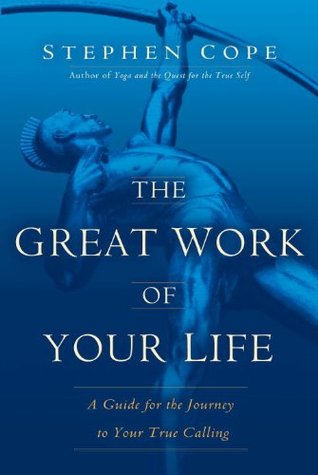More on this book
Community
Kindle Notes & Highlights
by
Stephen Cope
Read between
March 20 - June 26, 2018
Thomas Merton says, “What you fear is an indication of what you seek.”
Gnostic Gospel of Thomas. “If you bring forth what is within you, what you bring forth will save you; if you do not bring forth what is within you, what you do not bring forth will destroy
Yogis insist that every single human being has a unique vocation. They call this dharma.
The Gita is the one book Gandhi took with him to prison, and one of the few that Henry David Thoreau took to Walden Pond.
The Bhagavad Gita is a brilliant teaching on the problems of doing. There is so much talk these days about being.
problem of vocation. How do we know, finally, to what actions we are called in this life? The author knows that we’ll identify with Arjuna’s dilemma: How do we choose between two difficult courses of action? What are the consequences of an inability to choose, or of choosing poorly? Who
doubt is often called “the paralyzing affliction.” Paralysis is, indeed, its chief characteristic. It follows, then, that doubt is the central affliction of all men and women of action. The Catholic Encyclopedia weighs in convincingly on this issue. Apparently, doubt is an issue for Catholics as well as Hindus: “Doubt,” it reads, “[is a] state in which the mind is suspended between two contradictory propositions and unable to assent to either of them.” Catholics and yogis are apparently in agreement about this phenomenon of doubt.
Nor the bayonet stab what you really are; the Soul! Yourself I see, great as any, good as the best, Waiting secure and content, which the bullet could never kill, Nor the bayonet stab O friend. Whitman gave no indication in his journal that he had studied the Bhagavad Gita. But in his poetry he declared over and over again the very same truth that Krishna taught to Arjuna on the field of Kurukshetra:
Dharma is born mysteriously out of the intersection between The Gift and The Times. Dharma is a response to the urgent—though often hidden—need of the moment. Each of us feels some aspect of the world’s suffering acutely. It tears at our hearts. Others don’t see it or don’t care. But we feel it. And we must pay attention. We must act. This little corner of the world is ours to transform. This little corner of the world is ours to save.
And now a surprise: Beethoven was deeply inspired by his reading of the Bhagavad Gita. (When I discovered this I almost fell off my chair. Beethoven knew about yoga? My worlds had collided. This discovery caused me to call a dharma buddy in Paris out of the blue—and practically in the middle of the night—to tell him this news.) In his search for psychological and spiritual survival, Beethoven had combed the world’s great literature. And perhaps not surprisingly, he had bumped into the Bhagavad Gita. He read it intensively. He made notes
When I think of Beethoven as I have come to understand him, I cannot but see in my mind’s eye those vivid Catholic images of Christ with his palms and side oozing blood and light. Both blood and light, mind you. Beethoven’s relentless—and often bloody—pursuit of his dharma gave light to the world. It saved him. But it also saved the world. More about this strange fact later.


